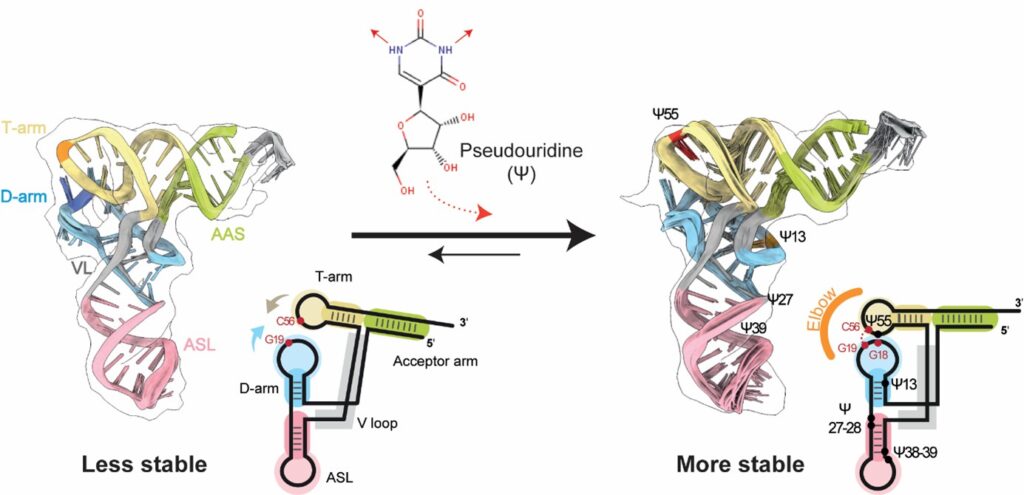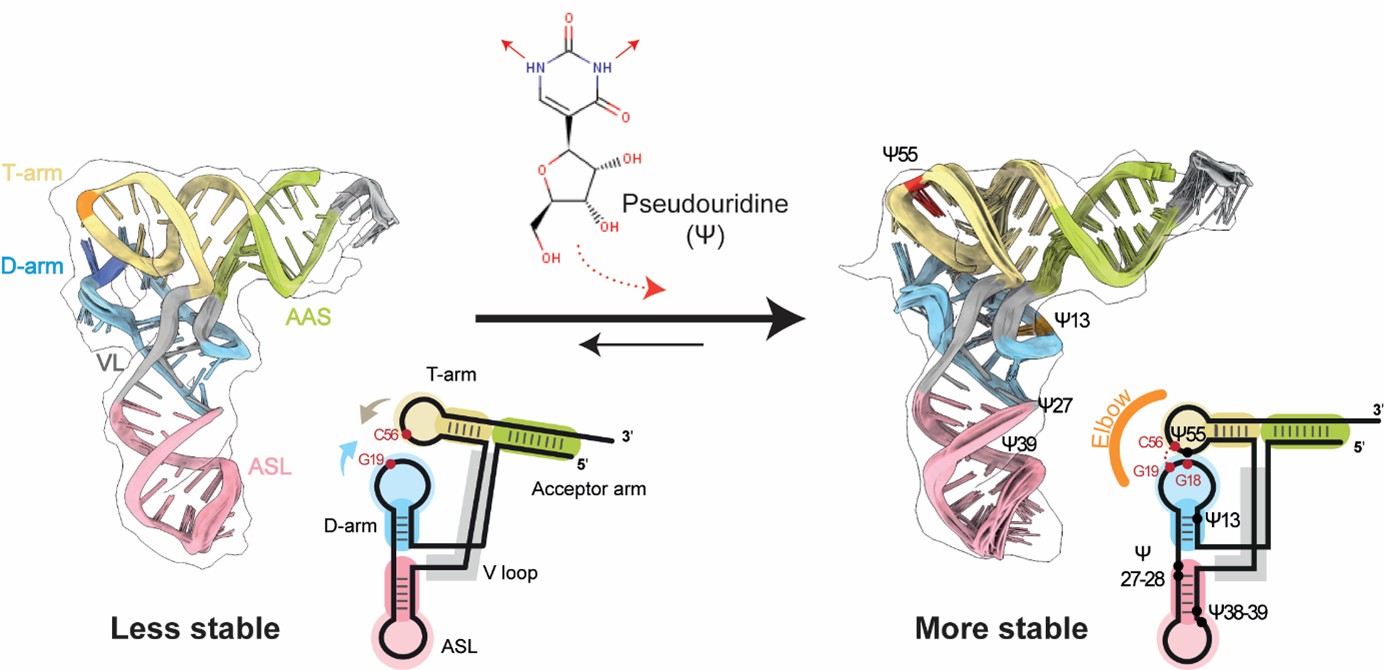In a pioneering study entitled “Determining the effects of pseudouridine incorporation on human tRNAs” published in EMBO Journal, researchers from Malopolska Centre of Biotechnology of the Jagiellonian University in Krakow, in collaboration with scientists from the International Institute of Molecular and Cell Biology (IIMCB) in Warsaw and institutions from the United Kingdom and France, have significantly advanced our understanding of how specific modifications in transfer RNAs (tRNAs) affect their structure and stability.
tRNAs are essential molecules decoding genetic information into proteins, fundamental to all living organisms. We know tRNAs as long as we know DNA, but historically structural studies of tRNAs have been challenging due to their small size and complexity. The published work shows the structure of four human tRNAs before and after the enzyme-mediated introduction of pseudouridine (Ψ), linking these modifications to enhanced stability and certain structural changes. The findings reveal that the incorporation of Ψ, which is also incorporated in recent mRNA vaccines, not only stabilizes tRNAs, but also induces significant local structural changes. In detail, interactions between the D- and T-arms of the tRNA were identified as critical for maintaining their overall tertiary structure.
“This study demonstrates the profound impact of RNA modifications on tRNA stability and function,” said prof. Sebastian Glatt, the leader of this study. “Our findings not only enhance our understanding of tRNA biogenesis but also highlight the potential applications of engineered tRNAs for therapeutic purposes.” adds Anna Biela, the first author of the work.
Key results from the study include:
- The first cryo-EM structures of multiple unmodified and pseudouridylated human tRNAs.
- Clear evidence that specific pseudouridine modifications significantly increase the stability of tRNAs.
- Context-dependent impact of modifications, indicating that not all pseudouridine modifications are equally beneficial.
The study was possible owing to the interdisciplinary combination of experimental and computational analyses. It utilized the advanced single-particle cryo-electron microscopy (cryo-EM) infrastructure at the Solaris Synchrotron in Krakow, the Structural Biology Core Facility (SBCF) at MCB, novel biophysical techniques developed by Jakub Novak, and computational modeling and simulations.
The collaborating team at the IIMCB, led by Prof. Janusz Bujnicki, contributed essential computational modeling and molecular dynamics simulations that provided critical insights into the structural stability mechanisms of modified RNAs. This study illustrates the power of computational modeling for interpreting low- to medium-resolution cryo-EM maps,” said Prof. Bujnicki, a co-leader of the study. „Our simulations clearly show how pseudouridine stabilizes key interactions within tRNA structures, paving the way for future analyses of other RNA modifications.”
This research highlights the potential of engineered tRNAs in treating genetic disorders and advances our understanding of how RNA modifications influence tRNA structures. These insights may contribute to developing new RNA-based therapies and broaden our overall understanding of RNA biology.
Research funding for this study was provided by European Research Council (ERC) under the European Union’s Horizon 2020 research and innovation program grant No. 101001394 (SG), Polish National Science Center grant 2020/37/B/NZ2/02456 (JMB), Polish high-performance computing infrastructure PLGrid.

